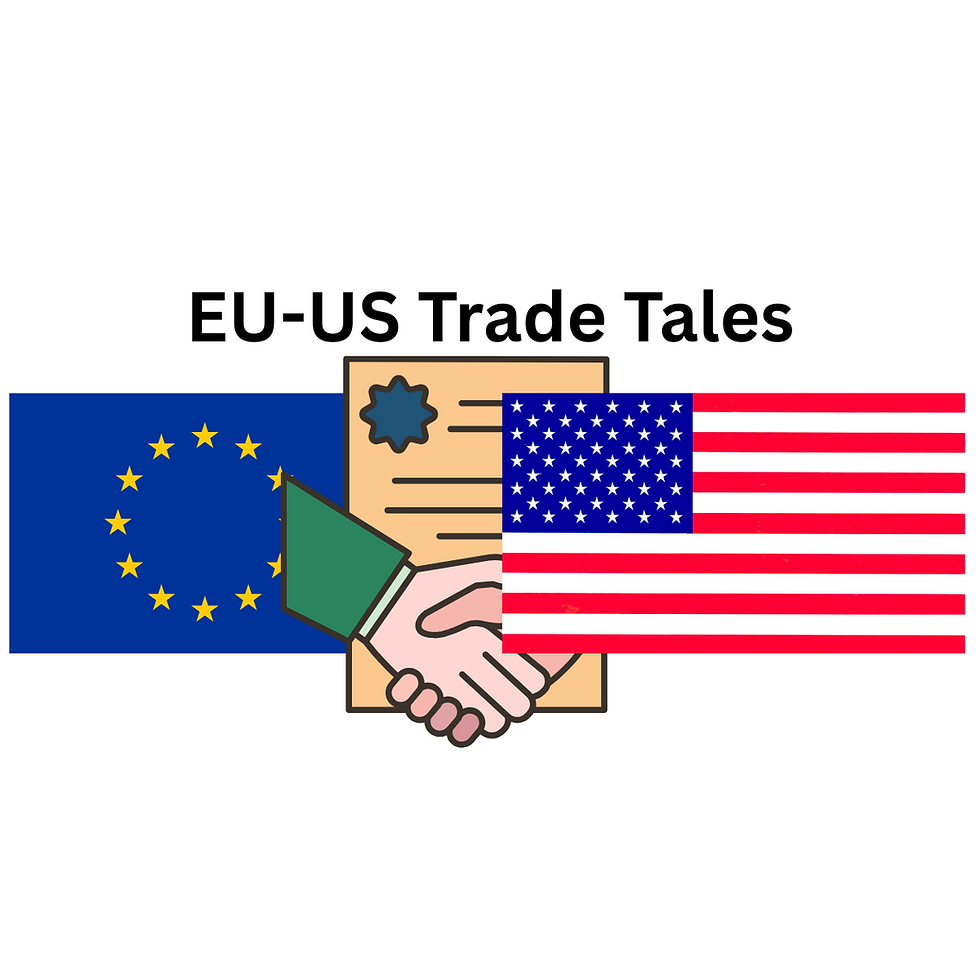White House vs EU Trade Deal Facts
- Madni Laghari

- Jul 31
- 4 min read
Trade deal confusion hits customs hard — conflicting US and EU claims demand sharper compliance strategies.

The recent EU-US trade agreement announced at Trump’s Turnberry resort exposes a rare and dangerous split: both sides tell completely different stories about what was agreed. As a customs professional working across the EU, UK, and US, you know conflicting narratives happen, but rarely this public or contradictory.
This creates real risks for compliance, tariff planning, and supply chain management.
Check out our blog: White House vs EU Trade Deal: What Customs Pros Must Know
Arne’s TakeawaysBoth sides disagree publicly on critical deal terms — tariffs, investments, and procurement. Customs pros must prepare for worst-case scenarios, maintain impeccable documentation, and strengthen broker relationships. Don’t wait for clarity. Build resilient compliance systems now. |
Key Questions Covered in This Blog
What are the White House and EU Commission saying differently?
Which version should customs professionals trust?
How does this impact compliance strategies?
What does this mean for key sectors?
Abbreviations Used In This Blog
EU: European Union
US/USA: United States of America
UK: United Kingdom
“When two major economies can’t agree on what they’ve just agreed to, you know we’re in for a bumpy ride. This isn’t just political theatre — it’s a compliance nightmare waiting to happen.”– Arne Mielken, Managing Director, Customs Manager
Fancy a Call?Book a free expert consultation:www.customsmanager.org -> Book Expert Call Get Weekly Game-Changing Updates with Customs WatchStay ahead with insider customs insights, compliance tips, and trade news delivered weekly. Sign up at www.customsmanager.info. |
What are the White House and EU Commission Saying Differently?
The two sides’ narratives contradict sharply, leaving customs professionals in a fog. Here’s where they diverge:
Overall Framework:
White House: Calls it a “generational modernization” shifting economic power toward the US.
EU Commission: Frames it as bringing “stability and predictability” to avoid trade war.
Pharmaceuticals:
White House: Announces a 15% tariff on pharmaceuticals starting August 1.
EU Commission: Says pharmaceuticals remain tariff-free until US completes Section 232 review.
Steel and Aluminum:
White House: Maintains 50% tariffs as revenue.
EU Commission: Calls it continuation of existing tariffs, not new revenue generation.
Investment Commitments:
White House: Claims EU will invest $600 billion in the US and buy $750 billion in US energy.
EU Commission: Confirms energy purchases but calls them market-driven, not mandated.
Military Equipment:
White House: Says EU agreed to buy “vast amounts” of military gear.
EU Commission: Calls this an expectation, not a formal agreement.
Market Access:
White House: Promises elimination of all tariffs on US industrial goods.
EU Commission: Will target non-tariff barriers and “meaningful quotas,” no full tariff removal.
Automotive Sector:
White House: Confirms 15% tariff on autos and parts.
EU Commission: Calls it a reduction from threatened 30%, a damage limitation.
Which Version Should Customs Professionals Believe?
Assume the worst for compliance. Customs authorities typically prioritize tariff collection when faced with ambiguity.
Pharmaceuticals: Prepare for 15% tariffs but keep thorough documentation for refunds if EU’s stance prevails.
Steel/Aluminum: 50% tariffs continue — no debate here.
Documentation: Keep impeccable records to handle divergent customs rulings.
How Does This Impact Compliance Strategies?
The conflicting narratives create a compliance minefield. Here’s what you must do:
Risk Assessment: Model multiple scenarios, don’t rely on one fixed version.
Cash Flow: Maintain higher reserves to cover unexpected duties and refunds.
Legal Documentation: Detailed records become your shield in disputes.
Customs Broker Coordination: Work closely with brokers in both jurisdictions for real-time updates.
What Does This Mean for Key Sectors?
Pharmaceuticals: A $155 billion sector faces uncertainty. Adjust pricing and cash reserves for fluctuating tariffs.
Automotive: Tariff relief helps but complicates supply chains and cost forecasting.
Steel/Aluminum: Sustained tariffs increase costs downstream for manufacturers and construction firms.
Practical Expert Recommendation — Immediate ActionReview pending shipments and update documentation to reflect potential tariff changes.
|
Summary Table: Contrasting EU & US Trade Deal Claims
Aspect | White House Claim | EU Commission Claim |
Overall Deal | US-favouring, power rebalance | Stability and predictability |
Pharmaceuticals | 15% tariff from August 1 | No tariffs until Section 232 review completed |
Steel & Aluminum | 50% tariff remains as revenue | Continuation of existing tariffs |
Investment | $600B EU investment + $750B energy purchase | Market-driven energy purchases, no mandates |
Military Equipment | EU agreed to large purchases | Informal expectation, not agreement |
Market Access | Eliminate all tariffs on US industrial goods | Address non-tariff barriers, no blanket cuts |
Automotive | 15% tariff in place | Reduced from 30% threat, damage control |
Wrap-Up & Next Steps
This deal’s conflicting narratives pose a real challenge for customs and compliance officers. Plan for uncertainty, document everything, and strengthen your customs broker ties. Don’t wait for official clarity — build flexibility into your compliance approach now.
Sources & Further Information
Official White House Fact Sheets
European Commission Press Releases
Reuters, Bloomberg trade coverage
Personalized trade intelligence available at www.customsmanager.info
Who We Are
Customs Manager Ltd. provides expert customs, export controls, and sanctions consultancy. We offer a dedicated Trade Intelligence Service at www.customsmanager.info to keep customs and compliance professionals in the EU, UK, and US fully informed.
Disclaimer
This article is for educational purposes only and not legal advice. Consult qualified professionals for tailored guidance. Use information at your own risk.
Hashtags
#CustomsCompliance #TradeCompliance #ImportRegulations #ExportCompliance #EUTrade #USTrade #CustomsProfessionals #TradeLaw #CustomsBroker #ExportControls #SupplyChain #Tariffs #Pharmaceuticals #Steel #Aluminum #AutomotiveTrade #ComplianceOfficers #CustomsConsultant #InternationalTrade #TradePolicy #CustomsManager









Comments